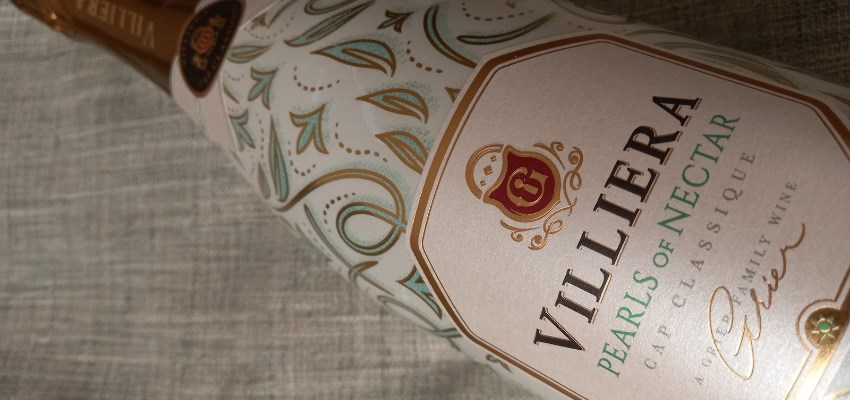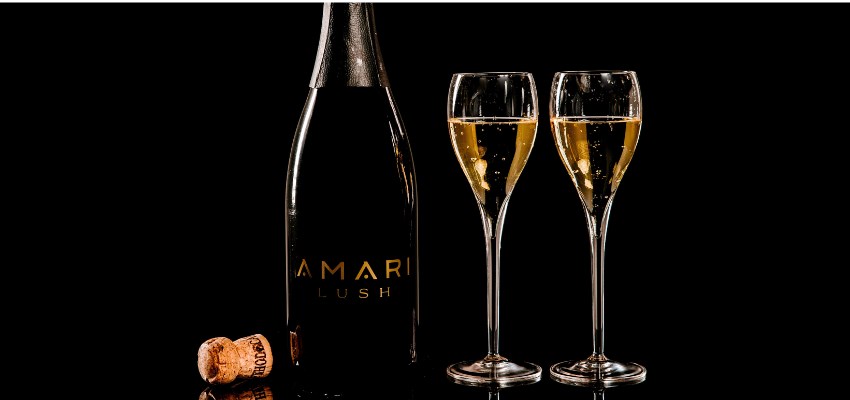It’s been less than a decade since Graham Beck wines took the dramatic step of jettisoning their still wine portfolio – with some notable category leaders among them – in favour of sparkling wine. It was a bold R150 million move but was smart in that it allowed them to focus purely on Cap Classique.
One of their innovations which accompanied the announcement was the introduction of a demi-sec bubbly. And it’s a category of sparkling wine which shows no sign of slowing down. If anything, it’s speeding up with more and more producers now offering the market what it clearly wants – fizz with a touch of sweetness.
The 2023 Platter Guide still lists only a handful of examples in its comprehensive index, but it’s growing. Listed under ‘MCC, white, off-dry/semi-sweet‘ are Darling Cellars, Haute Cabrière, KWV, Pongrácz, Simonsig, Boschendal, Graham Beck, Havana Hills and Woolworths. And the roll of ‘MCC rosé off-dry/semi-sweet’ wines comprises Graham Beck, Krone, Pongrácz and Simonsig.
One of the newest entrants to the party is Cap Classique pioneer, Villiera which recently released Pearls of Nectar. (The name is a reference to the “magical string of tiny bubbles” which rise in the glass as well as the pearls of nectar exuded by the many indigenous plants on their property that attract birds and insects – which dovetails perfectly with Villiera’s longstanding green/eco-conscious ethos.)

Head of the Cape Wine Academy Heidi Duminy, who did her Master’s thesis on sparkling wine and also heads up the judging panel for the annual Amorim Cap Classique challenge, said sweeter bubbly is the hot topic of the moment. “Cap Classique is growing, but the sub-category that is just exploding is in the sweeter style,” she said. “More and more noted Cap Classique producers are expanding their range to include a demi-sec or a nectar.”
Although there is not yet an “official” name for this sweeter style locally, most producers have opted to follow the lead set by Krone, the Tulbagh-based bubbly specialist. Krone Night Nectar demi-sec is the undoubted leader of the pack, selling 146 000 bottles into local retail, Duminy said. “They’re the biggest by far. The next or second spot is occupied by Distell’s Pongracz with its distinctively purple packaged Noble Nectar and they’re at 96 000 bottles.”
Duminy said consumers relate to the term “nectar” far more easily than they would to demi-sec, which is the sweetness level which Champagne favours. According to SA wine sweetness legislation – specifically for bubbly – semi-sweet is between 32 and 50 grams per litre of residual sugar, where dry is anything under 12g. This is modelled on France’s sweetness levels which are brut nature (0 – 3g), extra brut (0 – 6g), brut (0 – 12g), extra dry (12 – 17g), sec or dry (17 – 32g), demi-sec (32 – 50g) and doux (50g+).
Johan Malan, son of Simonsig Kaapse Vonkel pioneer Frans Malan, pointed out that French Champagne was initially substantially sweeter than modern versions. “The first dry champagne only hit the market halfway through the 19th century. So we aren’t inventing something new, but making a style of bottle-fermented sparkling wine that’s been around for centuries.” Simonsig opted to go the demi-sec route when the Kaapse Vonkel 2015 was released, rather than calling it a nectar.
Duminy noted: “It’s gained popularity because people associate it with Moët & Chandon’s well known Nectar – or Veuve Clicquot’s Demi-Sec or Rich bottlings.” Another point she made was that the Krone Night Nectar is an unashamedly premium product, retailing for R599 a bottle.
One totally new brand which is hoping to make waves not just locally but in continental Africa is black-owned brand Amari Wines which was co-founded by Siya Maphalala, Luyanda Maphalala, Xolani Mancotywa and Sazi Ngcobo in 2017. Amari launched their first bubbly smack-dab in the middle of Covid, in February 2021. Their first product? A demi-sec bubbly – Amari Lush.
Ngcobo, who with Mancotywa used to work for Moët Hennessy, said the Lush was a vintage demi-sec. “It’s important to note that it is not an overly sweet demi-sec,” he said, “as our dosage is only 33g/l. This is by design as we really wanted to produce an easy-drinking wine that can be enjoyed anytime of the day and on any occasion.” Ngcobo said the delicate honeyed flavour and richness of the demi-sec made it pair well with food, advocating spicy curries and fresh fish.

Amari (the name has African-Yoruba roots and means “strength”) is a small brand but has aspirations to be a bigger player. The growth trajectory has already seen it move from online exclusively to retail and being listed in hand-picked restaurants. “We plan to take on Africa with our focus markets being Nigeria, Angola and Ghana. Our ultimate goal is to be a globally recognised brand that is proudly South African.”
The interesting aspect to this style of cap classique, Duminy said, was that it was an entirely new market. “It’s very much across the board and is a good recruiter into the category. It’s the point at which people start getting into Cap Classique.
“And it’s intriguing to note that these new consumers are very aware of the difference in quality between the bottle fermented wines and the carbonated sparkling wines – or non-Cap Classiques. There’s definitely an appetite for a premium product – as demonstrated by Krone’s bottle price which the market is more than happy to pay.”
Duminy’s final observation was the difference in the way that these nectar or demi-sec wines are made. “In Champagne, pretty much all wines start out the same all the way through the second fermentation and maturation. It’s only when the dosage is added at the final stage that the difference between demi-sec or doux is made. In South Africa, the Cap Classique producers actively blend the respective wines from day one to be slightly riper or more fruit-driven for their demi-sec or nectar examples.”
This article was originally published on WoSA's blog, Cape Chatter.